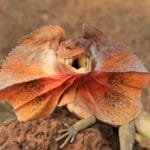Werebats, the chilling shapechangers of folklore and fantasy, have captured imaginations for centuries. This article delves into the origins, characteristics, and cultural depictions of these creatures, exploring their unique place within the broader context of shapeshifter myths, specifically within the popular game Dungeons & Dragons.
Understanding the Werebat
Werebats are humanoids afflicted with a rare strain of lycanthropy, a supernatural curse that allows them to transform between various forms. Their existence bridges the gap between human and beast, creating a compelling and often terrifying figure in mythology and games like D&D.
The Transformation: A Tripartite Existence
The most defining feature of a werebat is its shapeshifting ability. They typically shift between three distinct forms:
Humanoid Form: In this guise, a werebat is virtually indistinguishable from a normal human. Subtle clues, such as a slightly upturned nose, unusually sharp teeth, an aversion to sunlight, or odd behavioral shifts like a sudden preference for raw meat or increased reclusiveness, may suggest their true nature. This ability to blend seamlessly into society makes them particularly unnerving. They maintain their full intelligence and cunning in this form.
Hybrid Form: This form blends human and bat traits, typically depicted as a medium-sized humanoid with large, leathery wings, often described as being as wide as a horse’s. This is generally their preferred form for combat and hunting, combining strength with aerial maneuverability. Flight is a key advantage in this form.
Giant Bat Form: This form resembles a large bat, prioritizing speed and agility in the air. It’s ideal for quick escapes, scouting, or aerial ambushes. Like the hybrid form, the giant bat form grants flight.
It’s important to note that not all werebats have access to all three forms. Some might only be able to shift between humanoid and hybrid, or humanoid and giant bat. In D&D 5e, transforming between forms typically requires an action, adding a tactical element to gameplay. Equipment doesn’t transform with them, and flight is only possible in the hybrid and giant bat forms. Curious about other creatures your dog can’t eat? Learn more about mulberries for dogs here.
The Curse: Origins and Effects
Lycanthropy in werebats is typically transmitted through the bite of an infected individual. This magical disease not only alters their physical form but also affects their senses and behavior.
Enhanced Senses: Werebats often possess echolocation, emitting high-pitched sounds and using the returning echoes to “see” even in complete darkness. Some variations even grant them a disorienting screech, a sonic attack capable of stunning prey or creating an advantage in combat.
Bloodlust: A defining characteristic is their insatiable thirst for blood. This isn’t simply a dietary preference; it’s a deep-seated, primal urge, intensifying during combat. This bloodlust makes them formidable and relentless foes.
Society and Behavior: Outcasts of the Night
Werebats are often solitary creatures, shunned by both human society and, in some cases, even their own kind. This isolation can lead to psychological distress and unusual behaviors, such as a compulsive desire to hoard treasure, perhaps as a way to find comfort and control in a world that rejects them.
In the Forgotten Realms setting of D&D, werebats are frequently associated with goblins, potentially due to shared experiences of marginalization. This connection raises questions about the influence of goblin heritage on werebat behavior and tactics.
Werebats in Combat: Wings of Fury
Werebats favor swift, aerial ambushes, often utilizing their hybrid form for combat. They might swoop down from the darkness, snatching unsuspecting victims and carrying them into the night, or engage in a flurry of attacks from above using their razor-sharp claws and teeth. Their screech, where present, adds another layer of threat, disorienting opponents before a physical attack.
The Possibility of a Cure: A Glimmer of Hope?
While powerful magic, such as the remove curse spell or divine intervention, might offer a chance to break the curse of lycanthropy, the question of whether a werebat even desires a cure adds a moral dimension. What if the beast within has become an integral part of their identity? This internal conflict further complicates the werebat’s story.
Werebat Variations and Lore: A Deeper Dive
Depictions of werebats vary across different editions of D&D and other sources. Some versions, like AD&D 2nd Edition, give them a multiattack option in humanoid or hybrid form, allowing for a bite and claw attack simultaneously. Ongoing research and evolving interpretations of folklore continue to shape our understanding of these creatures. Some theories even suggest a vulnerability to radiant energy, connecting their aversion to sunlight to a potential weakness, although this remains a subject of debate among scholars.
| Feature | Description | Source(s) |
|---|---|---|
| Definition | A shapechanging humanoid afflicted with a rare form of lycanthropy, capable of transforming between humanoid, hybrid (humanoid with bat-like features, including wings), and giant bat forms. | Monster Manual, Various Sources |
| Origin | Primarily of goblin descent, though other origins are possible. Transmitted via the bite of an infected individual. | Various Sources |
| Forms | Humanoid, Hybrid (Medium), Giant Bat (Large). Not all werebats have access to all three forms. Transformation typically takes an action in D&D 5e. Equipment does not transform. Flight is only possible in hybrid and giant bat forms. | Various Sources, 5e SRD |
| Abilities | Shapeshifting, enhanced senses (including echolocation), sometimes a disorienting screech (sonic attack), driven by bloodlust. In some editions (like AD&D 2nd edition), they have a multiattack (bite and claw). | Various Sources, 5e SRD, AD&D 2nd Edition Sources |
| Lore | Found in various D&D editions and settings like the Forgotten Realms. Often associated with goblins. Frequently dwell in subterranean environments. | Various Sources, Forgotten Realms Wiki |
What are the powers of a vampire bat? (Addressing the Confusion)
Often, the term “vampire bat” evokes images of the mythical werebat. However, real vampire bats are fascinating creatures in their own right, possessing unique biological adaptations rather than supernatural powers. Let’s clarify the distinction:
Real Vampire Bats: Masters of Biology
Real vampire bats have evolved specific biological tools for their unique feeding habits:
- Sharp Incisors: These allow them to make precise, shallow cuts in their prey.
- Anticoagulant Saliva: Containing Draculin, this prevents blood from clotting, ensuring a steady flow.
- Heat Sensors: These specialized sensors on their noses help them locate blood vessels close to the skin’s surface.
Werebats: Creatures of Myth and D&D
Werebats, as depicted in folklore and D&D, possess supernatural abilities stemming from their curse of lycanthropy:
- Shapeshifting: The core power, allowing transformation between humanoid, hybrid, and giant bat forms.
- Enhanced Senses: Including echolocation and, in some cases, a disorienting screech.
- Bloodlust: A driving force in their behavior.
| Feature | Vampire Bat | Werebat (D&D) |
|---|---|---|
| Origin | Natural Evolution | Supernatural Curse (Lycanthropy) |
| Abilities | Biological (teeth, saliva, senses) | Shapeshifting, Enhanced Senses, Bloodlust, Sonic Attack |
| Diet | Primarily Livestock Blood | Varied, Often Driven by Bloodlust |
This distinction highlights the difference between the biological marvels of real vampire bats and the supernatural powers of their mythical counterparts, the werebats.

















1 thought on “Unveiling the Werebat: D&D Lore, Stats, and Strategies”
Comments are closed.